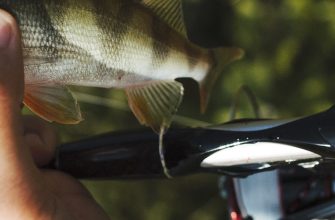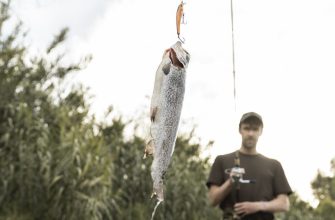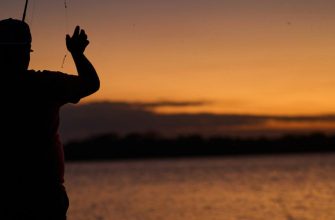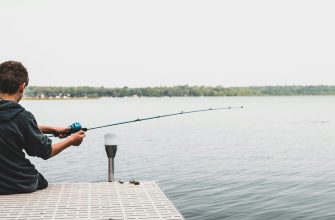- Understanding the Common Freshwater Fish Species in New Jersey
- Common Fish Species in NJ Freshwaters
- Freshwater Fish Identification Guide
- Essential Tips for Catching Freshwater Fish in New Jersey
- Understanding the Fish Behavior
- Largemouth Bass Behavior
- Decoding Smallmouth Bass
- Rainbow Trout Habits
- Cracking the Brook Trout Code
- Killer Catfish Conduct
- Walleye Ways
- Fishing Equipment and Gear Essentials
- How to Locate Prime Fishing Locations
- Fishing Techniques for Novices
- Top Spots for Freshwater Fishing in New Jersey
- Lake Hopatcong
- Delaware River
- Round Valley Reservoir
- Raritan River
- Conserving the Freshwater Fish Diversity in New Jersey
- NJ Fishing Regulations for Freshwaters
- The Role of Fishing Regulations in Conservation
- How Amateur Anglers Can Contribute to Conservation
- Closing Thoughts on New Jersey’s Freshwater Bounty
- FAQs
- Q: What types of freshwater fish can be found in New Jersey?
- Q: Where can I find a fish identification guide for New Jersey’s freshwater species?
- Q: What are some popular techniques for catching freshwater fish in New Jersey?
- Q: What is the best time of year to pursue freshwater fishing in New Jersey?
- Q: Are there any specific regulations or fishing etiquette I should be aware of when fishing in New Jersey?
- Q: Where can I find boating resources to help with my freshwater fishing adventure in New Jersey?
- Q: What are some great places to go freshwater fishing in New Jersey?
- Q: How can I learn more about the different fish species I might catch while freshwater fishing in New Jersey?
- Q: Can you provide tips for beginners who want to try freshwater fishing in New Jersey?
- Q: Is there a particular fish species in New Jersey that is especially sought after by anglers?
Welcome, fishing enthusiasts! New Jersey is a hidden gem for those who want to try fishing. This state is home to a diverse array of freshwater inhabitants that are sure to pique your interest. Whether you’re a parent planning a fun family fishing trip or someone who simply wants to enjoy a peaceful day by the lake, this guide is for you.
To catch a glimpse of the rich aquatic life in New Jersey, you don’t necessarily need a fancy boat or expensive equipment. A simple fishing rod and a box of lures are enough to get you started. You might be surprised by the variety of fish you can encounter in New Jersey’s freshwater bodies.

You might be wondering, “What kind of fish can I find in New Jersey?” Let’s take the Bluegill, for instance. You’ll find that these colorful, sunfish family members are a common sight in the state’s freshwater. Or how about the White Crappie? This species is known for its distinctive, silvery-white body and dark spots.
Fishing in New Jersey offers a unique experience. There’s a certain thrill in the unexpected – you never quite know what you’re going to reel in. It’s this sense of excitement and adventure that we hope to convey in this article.
So, if you’re ready to explore the wonderful world of New Jersey freshwater fishing, keep reading! There’s a wealth of information waiting for you in this guide. And remember – the key to a successful fishing trip lies in the order you follow. Be patient, be observant, and most of all, enjoy the experience. If you like this content, be sure to check out our other articles. Happy fishing!
Understanding the Common Freshwater Fish Species in New Jersey

Common Fish Species in NJ Freshwaters
Largemouth Bass: The most popular game fish in NJ. These aggressive predators hunt for frogs, crayfish, baitfish, and insects in weedy, shallow areas. They put up a great fight when hooked. Over 5 lbs is a trophy catch.
Smallmouth Bass: Prefer clearer, rocky waterbodies. They ambush prey like minnows and attack fast-moving lures. Pound for pound, they are one of the hardest-fighting freshwater fish. Most caught are 2-4 lbs.
Brook Trout: New Jersey’s only native trout. Often brightly colored with ornate patterns. They frequent cold, clean streams and rivers. Primarily insect eaters. Provide exciting action for fly fishermen. The average size is under 2 lbs.
Rainbow Trout: Introduced to NJ and stocked in lakes and reservoirs before opening day. Acrobatic fighters when hooked. They target baitfish, nymphs, worms, and eggs. Grow bigger and live longer than Brook Trout. Over 10 lbs is a fish of a lifetime.
Catfish: The Delaware River holds monster Flathead, Blue, and Channel Cats over 50 lbs. They hide in holes and wait to ambush live fish. Put up a determined battle when hooked on heavy tackle. The official NJ record is over 80 lbs!
Walleye: Distinguished by large, glassy eyes. Cruise around lakes at dusk and night to hunt smaller fish. Sensitive to light so they can be challenging to catch. Delicious to eat. Most catches are 2-5 pounders.
Freshwater Fish Identification Guide
Identifying different fish species is a crucial skill for any angler. The key to distinguishing among these common species lies in their unique physical characteristics.
Here are some tips on identifying common New Jersey freshwater game fish when you hook them:
Largemouth Bass: When reeling one in, you’ll feel bursts of strong head shakes and powerful darting runs as they resist. Largemouths have a large, elongated body that is dark green on top and pale below. An open mouth extends behind the eye.
Smallmouth Bass: Immediately starts with acrobatic jumps and dives when hooked, showing off their strength. Brownish bronze on their upper body with vertical bars on the sides. Red eyes and a smaller crescent-shaped mouth compared to largemouths.
Brook Trout: Pretty brown, green, and red spots stand out when you see them up close after landing. Very lively fighters who will make quick darts on light tackles. Identifiable by the black wavy bands on a light-colored body, and red spots circled with blue.
Rainbow Trout: Launch into the air and unleash speedy runs when hooked. Shimmering colors that range from blue-green backs with a pink stripe, to more silver forms. Small black spots over their entire body are key. Adipose and anal fins have a bold white tip.
Catfish: Feel a deadweight slowly moving on the other end. Catfish don’t run much, relying on sheer heft. On the surface, you’ll see a long whisker-like barbel and a wide, flat head. Skin lacks scales and is often brown or grayish.
Walleye: Tap tap tap might be the only indication you have one on the light line. They tend to subtly nibble. Once seen, those marble-like eyes shining below a dark blotch on the gill plate confirm it’s a walleye. Olive and gold coloring.
Essential Tips for Catching Freshwater Fish in New Jersey

Understanding the Fish Behavior
So here’s an overview of the behavior patterns and feeding habits of some of NJ’s most popular sport fish.
Largemouth Bass Behavior
These bad boys own the shallows. Cruising weed lines, lurking near wood, skirting lilypad patches – if there’s cover around, that’s their strike zone. Early and late when waterbody is low light, they’ll raid the banks looking for frogs, crayfish, and baitfish. Come mid-day, they shift offshore to deeper structures and ambush prey from cover.
When the spawn hits in late spring, all bets are off. Big females roam shallow bays, keyed in on beds. Males aggressively guard the areas, hitting anything that invades the zone. These nest guardians make for exciting sight fishing!
As the heat of summer kicks in, bass slide into their typical dawn and dusk feeding routines. By knowing this pattern, you can maximize prime-time windows. And don’t forget about the night! It’s a stealthy period where trophy fish let their guard down.
Read more: Ultimate Utah Fly Fishing Guide: Green River Fishing for Trout
Decoding Smallmouth Bass
While their cousins the largemouths rule backwaters and weedy lakes, smallies set up shop around rock and moving streams. They tend to frequent cleaner sections or reservoirs and faster streams over muck bottom impoundments. The current delivers a constant influx of tasty crayfish, shiners, and other stream prey.
Facing waterways, focus efforts around current breaks like boulders, logs, and pockets behind islands. Smallmouths use these spots to ambush drifting meals with less expenditure of energy. In lakes, target main lake humps, submerged points, and rock piles that provide ambush cover and access to deeper refuge when pressured.
Rainbow Trout Habits
Stocked ‘bows need some time after they’re planted to get acclimated. At first release, bait and lures trigger little response as they adjust. Give them a few weeks before hitting a recently stocked lake. This offers the fish a chance to distribute while tapping into their natural feeding instincts.
In rivers and streams, seek out pool and run complexes. Trout will hold in oxygen-rich pockets behind a structure, bursting out to grab drifting nymphs and larvae. Scan for deeper shelves along banks to spot actively cruising fish. Approach carefully and make accurate casts, as wild trout spook easily in the crystal clear flows.
Cracking the Brook Trout Code
New Jersey’s only native trout, brookies need a clean, cold habitat and high oxygen content to thrive. This is why you find them occupying fertile streams and rivers rather than the warmer, more stagnant backwater lakes many other fish prefer. Look for riffles and runs that crash over gravel or sand bottoms to produce an ideal oxygenated habitat.
Because their metabolism is directly dependent on ambient temperature, the foraging activity of brook trout fluctuates with the weather. Overcast days or early spring warming trends spur aggression as insect activity increases. Whereas the nadir of summer or periods of low light deep into fall see brookies conserve calories, only picking off prey that bumps their nose.
Killer Catfish Conduct
On many NJ lakes and rivers, channels, blues, and flatheads have taken top predator status. You won’t find them up shallow much. Instead, they relate to greater depth with the current. Here they use their keen senses of smell and taste to detect distressed baitfish, following the scent trail to an easy meal.
The most exciting time is at night during summer. Find a ledge that drops into 25+ foot water. Soak oily cut attractants on the bottom for a true heart-pounding run. The whiskered giants invade shallow flats too at night, terrorizing bait under the cloak of darkness. For an amazing freshwater fight, cats bring the heat!
Walleye Ways
The freshwater version of a paradoxical fish, walleyes seemingly disappear in plain sight for much of the day. Thanks to those oversized marble eyes, they enjoy excellent vision compared to their prey. You’ll be hard-pressed to catch them in bright conditions, as straying from shadows makes walleyes uneasy.
As the last glow of dusk fades to night, the magic hour begins. It’s like a switch gets flipped, putting walleyes on the hunt. They migrate shallow, taking advantage of darkness to corral unsuspecting baitfish. Dams, bridge abutments, points, and weedlines become prime feeding zones. Locate adjacent deeper spots though, because walleyes won’t roam beyond quick escape range as the sun creeps up.
Fishing Equipment and Gear Essentials
Equipping yourself with the right gear is crucial to your success as a novice fisherman. Here’s a list of essentials:
- Fishing Rod & Reel: A medium-action rod with a spinning reel is a great start for beginners.
- Fishing Line: A monofilament line with a 6-12 pound test is versatile for most freshwater species.
- Bait & Lures: Live worms, minnows, and artificial lures can all be effective. The choice of attractant can depend on the species you’re targeting.
- Hooks: The size of the hook will depend on the size of the fish you’re targeting.
- Bobbers: These float on the surface and sink or bob when a fish bites.
- Fishing Pliers: Essential for unhooking the fish.
Please note that these are general recommendations, and specific gear may vary based on the species you’re targeting and the fishing location.
How to Locate Prime Fishing Locations
In New Jersey, there are plenty of fresh waterbodies to explore. The key is knowing what to look for. Study the topography of the lake or river you plan to fish. Look for areas where fish might congregate, like undercuts, fallen trees, or vegetation. Also, keep an eye out for signs of fish activity, such as jumping fish or swirling water. Local fishing reports can also be a great source of information.
Fishing Techniques for Novices
Fishing is an art, and like any art, it requires practice. Here are some techniques that can help beginners get started:
- Casting: This is the process of throwing your attractant into the water. Practice your casting to increase your accuracy and distance.
- Setting the Hook: Once a fish bites, you need to ‘set’ the hook by pulling your rod up and reeling in quickly.
- Playing the Fish: Once you’ve hooked a fish, it’s important to keep the line tight and guide the fish towards you. Avoid reeling against the drag.
- Landing the Fish: Use a net to land the fish. Be gentle and avoid causing unnecessary stress to the fish.
Top Spots for Freshwater Fishing in New Jersey

New Jersey is renowned for its abundance of fish-rich waters. From scenic mountain lakes to sprawling rivers that empty into the Atlantic Ocean, the Garden State offers incredible diversity for fishermen. For recreational fishermen, New Jersey is a true paradise where you can hook trophy specimens of almost any freshwater species.
Lake Hopatcong
When it comes to lake fishing, Lake Hopatcong stands out as the crown jewel of New Jersey. Located 50 miles west of New York City, it’s the state’s largest lake spanning over 4 square miles. Hopatcong is celebrated for its exceptional bass fishing. It holds a healthy population of largemouths and smallmouths, with weights ranging from 2 to 6 pounds. The lake also produces nice chain pickerel, crappie, yellow perch, and bluegills.
The best times are early spring and late fall when warming weather makes bass actively hunt along the shoreline. Prime spots are Byram Cove on the north side and Hopatcong’s southern shore. Use soft plastic swimbaits, crankbaits, and live bait to tempt trophy bass.
Delaware River
Another gem is the Delaware River, forming the border between New Jersey and Pennsylvania. Its upper stretches shine for smallmouth bass fishing. In the Delaware Water Gap area, expect hard-fighting “bronze backs” in the 2-4 pound class with tubes, grubs, and minnow plugs.
The lower, tidal sections of the river near Trenton also hold mammoth catfish. These apex predators tip the scales over 50 pounds, giving fishermen a tug of war. Soak a live fish or shrimp bait for your shot at a freshwater monster. Striped bass and other species also fill out the Delaware’s diverse fishery.
Round Valley Reservoir
If trout is on your agenda, head over to Round Valley Reservoir. As New Jersey’s largest lake at over 9 square miles, this shoreline gem is stocked pre-season with thousands of rainbow, brown, and lake trout. It averages about 2 to 4-pound fish. Round Valley also hosts nice-sized smallmouth bass, pickerel, crappie and perch.
You can fish by boat or from designated banks and piers. For trout and pickerel, try casting inline spinners, crankbaits, and spoons. Jigging molted soft plastics works well for bass. Peak activity tends to be early morning and late evening, with a lull during the midday sun.
Raritan River
Flowing through central New Jersey into Raritan Bay, the Raritan is distinguished by trophy largemouth bass. In Duke Island Park and South Branch Reservation, fishermen have landed bucket mouths over 8 pounds with big worm lures and live bait. Work a 6-inch plastic along the bottom or skip a surface frog over grass flats for your shot at a lunker catch. When bass are on the feed, it’s game on!
Conserving the Freshwater Fish Diversity in New Jersey

NJ Fishing Regulations for Freshwaters
As a beginner to freshwater fishing in New Jersey, the first step is to be aware of the local fishing rules. New Jersey has a set of rules and regulations designed to protect its rich diversity of freshwater fish species. These rules, overseen by the New Jersey Division of Fish and Wildlife, outline the fishing seasons, bag limits, and size limits for various species. Following these rules helps ensure that fish populations remain healthy and sustainable for future generations.
The Role of Fishing Regulations in Conservation
Fishing rules play a crucial role in fish conservation. They limit overfishing and help maintain a balanced ecosystem. Without these rules, certain species could be fished to the point of endangerment or even extinction. By adhering to these rules, you’re not just complying with the law, but you’re also contributing to the preservation of New Jersey’s diverse aquatic life.
Read more: Trout Fly Fishing on the Scenic Cumberland River in Kentucky
How Amateur Anglers Can Contribute to Conservation
As an amateur angler, you might be wondering how you can contribute to fish conservation. Well, it’s simpler than you think. In addition to following fishing rules, practicing catch and release can greatly benefit fish populations. This means that after catching a fish, you carefully unhook it and return it to the water, giving it a chance to continue living and reproducing.
Moreover, keeping the water clean is another way to help. Ensuring that no garbage or pollutants enter the water during your fishing trips will help maintain a healthy environment for the fish. After all, a clean habitat is essential for the survival and growth of all species.
Closing Thoughts on New Jersey’s Freshwater Bounty
As we’ve explored here, New Jersey provides tremendous habitat for an array of popular sport fish. The state’s vast watershed of lakes, ponds, rivers, and streams gives both warmwater and coldwater species room to flourish. By understanding the behavior patterns of fish like bass, trout, walleye, catfish, and more, fishermen can develop approaches to maximize success.
The fishing options across the Garden State offer something for every freshwater enthusiast. Trophy largemouths burst from lilly pads to crush frogs along southern impoundments. Smallmouth bass chase creek baitfish across rock shoals up north. Rainbow and brown trout hover in cold Appalachian streams out west. And channel cats reach behemoth proportions on the Delaware River’s current-swept ledges.
Now that you’ve gotten a glimpse into the diversity and abundance New Jersey has to offer freshwater fishermen, it’s time to wet a line and experience it yourself! From kayak fishing micro ponds to drifting live bait on massive reservoirs, high-quality fisheries await. As season changes unfold, be sure to adapt to conditions and fish behavior for the best action. Before you know it, you’ll be cradling that personal best catch, ready to sign up for your next NJ fishing mission!
FAQs
Q: What types of freshwater fish can be found in New Jersey?
A: Common freshwater fish species in New Jersey are largemouth bass, smallmouth bass, northern pike, muskellunge, channel catfish, black crappie, redbreast sunfish, white perch, rainbow trout, brook trout and more.
Q: Where can I find a fish identification guide for New Jersey’s freshwater species?
A: You can find a fish identification guide specifically for New Jersey’s freshwater fish on the New Jersey Division of Fish and Wildlife website or at local tackle shops.
Q: What are some popular techniques for catching freshwater fish in New Jersey?
A: Popular techniques for catching freshwater fish in New Jersey include using lures, bait fishing, and fly fishing.
Q: What is the best time of year to pursue freshwater fishing in New Jersey?
A: The best time to go freshwater fishing in New Jersey is typically during the spring and fall seasons when the fish are more active.
Q: Are there any specific regulations or fishing etiquette I should be aware of when fishing in New Jersey?
A: Yes, it’s important to check and follow the rules set by the New Jersey Division of Fish and Wildlife, as well as practice proper fishing etiquette to ensure the sustainability of the fish population and the waterways.
Q: Where can I find boating resources to help with my freshwater fishing adventure in New Jersey?
A: You can find helpful boating resources, especially if you want to learn more about boating in New Jersey, on the official website of the New Jersey State Police – Marine Services Bureau.
Q: What are some great places to go freshwater fishing in New Jersey?
A: There are a variety of waterways in New Jersey where you can pursue freshwater fishing, including lakes, ponds, and rivers. Some popular fishing spots include lakes and reservoirs in North Carolina or other prime locations for fishing in New Jersey.
Q: How can I learn more about the different fish species I might catch while freshwater fishing in New Jersey?
A: You can learn more about the different fish species you might catch in New Jersey by subscribing to a fishing newsletter and getting a fish identification guide to help you get familiar with the local fish species.
Q: Can you provide tips for beginners who want to try freshwater fishing in New Jersey?
A: If you’re new to freshwater fishing in New Jersey, it’s important to learn about the fish species, the equipment needed, and the proper techniques to start your fishing adventure.
Q: Is there a particular fish species in New Jersey that is especially sought after by anglers?
A: In New Jersey, anglers are particularly interested in catching species such as muskellunge, northern pike, and black crappie, which are highly sought after for their size and fighting ability.




